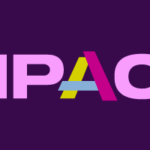Have You Heard the Latest About Workplace Gossip?

As the abstract to the paper, “An Integrative Definition and Framework to Study Gossip” appearing in the journal Group & Organization Management states, “The omnipresence of workplace gossip makes understanding gossip processes imperative to understand social life in organizations.” But to manage gossip it would help immensely to both understand it and perhaps even start to measure it, and that’s what the authors of the paper — five colleagues from the Faculty of Social Sciences, Organization Sciences at Vrije Universiteit Amsterdam — set out to do in their research. Those authors – visiting fellow Terence D. Dores Cruz, PhD candidate Annika S. Nieper, postdoctoral researcher Martina Testori, research associate Elena Martinescu, and professor Bianca Beersma – discuss what motivated their investigations in a series of questions that appear below the paper’s abstract.
The omnipresence of workplace gossip makes understanding gossip processes imperative to understand social life in organizations. Although gossip research has recently increased across the social sciences, gossip is conceptualized in disparate ways in the scientific literature. This conceptual confusion impedes theoretical integration and providing practical advice. To resolve this, we systematically reviewed 6114 scientific articles on gossip and identified 324 articles that define gossip. From these definitions, we extracted two essential characteristics of gossip on which there seems to be agreement within the literature, namely, (1) that gossip is communication between humans involving a sender, a receiver, and a target, and (2) that the target is absent or unaware of the communicated content. These two characteristics formed the basis of a broad, integrative definition of gossip: a sender communicating to a receiver about a target who is absent or unaware of the content. Furthermore, some definitions include characteristics on which there is less agreement: gossip valence (from negative to neutral to positive) and formality (from informal to intermediate to formal). We incorporate these characteristics in a dimensional scaling framework that can guide future research. Our broad, integrative definition of gossip and the dimensional scaling framework provide the building blocks for a systematic, integrated knowledge base on the role of gossip in human social life in general as well as in organizations. This can foster future theory development and hypothesis testing, ultimately helping organizations to manage gossip.
What motivated you to pursue this research?
People encounter gossip in their everyday lives and hear about it in popular media (e.g., the immensely popular Gossip Girl). As such, most people have some conception of what gossip entails, commonly it is seen as negative and informal. However, as researchers working to build a scientific understanding of gossip, this might not fully capture all that gossip entails in our social lives. Because people tend to have strong opinions about gossip, it can be difficult to broaden their understanding of it. We have had many discussions in academic and social settings about looking at gossip broadly and objectively.

Moreover, our reading of the gossip literature indicated that even researchers struggle to define gossip in a consistent manner. Such a lack of conceptual clarity makes it difficult to integrate research and provide advice to practitioners on how to manage gossip. We hoped that systematically studying existing conceptualizations of gossip could identify common ground and provide guidance to integrate the gossip literature. This resulted in proposing a unified definition of gossip: “A sender communicating to a receiver about a target who is absent or unaware of the content.” Based on this, we further proposed a framework in which we argue gossip ranges in valence (i.e., negative to neutral to positive) and formality (i.e., formal to informal).
What has been the most challenging aspect of conducting your research? Were there any surprising findings?
A major challenge was to dive into each paper on gossip and extract how gossip was defined. Definitions are not always clearly presented and often left implicit. I feel we succeeded in finding and classifying definitions where possible. This has resulted in an overview of how gossip is understood across the social sciences. However, we were surprised by the number of articles that did not include an explicit definition of gossip. To advance as a scientific field, it is important to make explicit what is understood by gossip. Currently, this concept is not clear enough to leave it up to implicit understanding. We hope our paper can serve as a reference for defining gossip in future work and understanding existing work on gossip.
In what ways is your research innovative, and how do you think it will impact the field?
We think a unique part of our work is combining an integrative definition with a framework to both understand and systematically study gossip. The definition of gossip we propose cuts across disciplines and is broad enough to encompass all situations that could benefit from a scientific understanding of gossip. Complementing this, the proposed framework allows for a detailed understanding of gossip in terms of its valence and formality. A particularly exciting organizational direction could be that forms of communication considered formal and outside the scope of gossip, such as performance reviews, could be examined through the lens of gossip. This could provide insights into gossip’s role in organizational life and on how to manage more formal communication.
More generally, we hope this can contribute to the gossip research field by providing tools to better understand what kind of gossip one is observing, or is discussed in a publication, and to systematically guide future research to understand the antecedents and consequences of gossip.












![Share Your Most Surprising Policy Citation for Chance to Win $500 [Closed] Share Your Most Surprising Policy Citation for Chance to Win $500 [Closed]](https://www.socialsciencespace.com/wp-content/themes/conferpress/images/default_thumbnail-new-border.jpg)






















































































